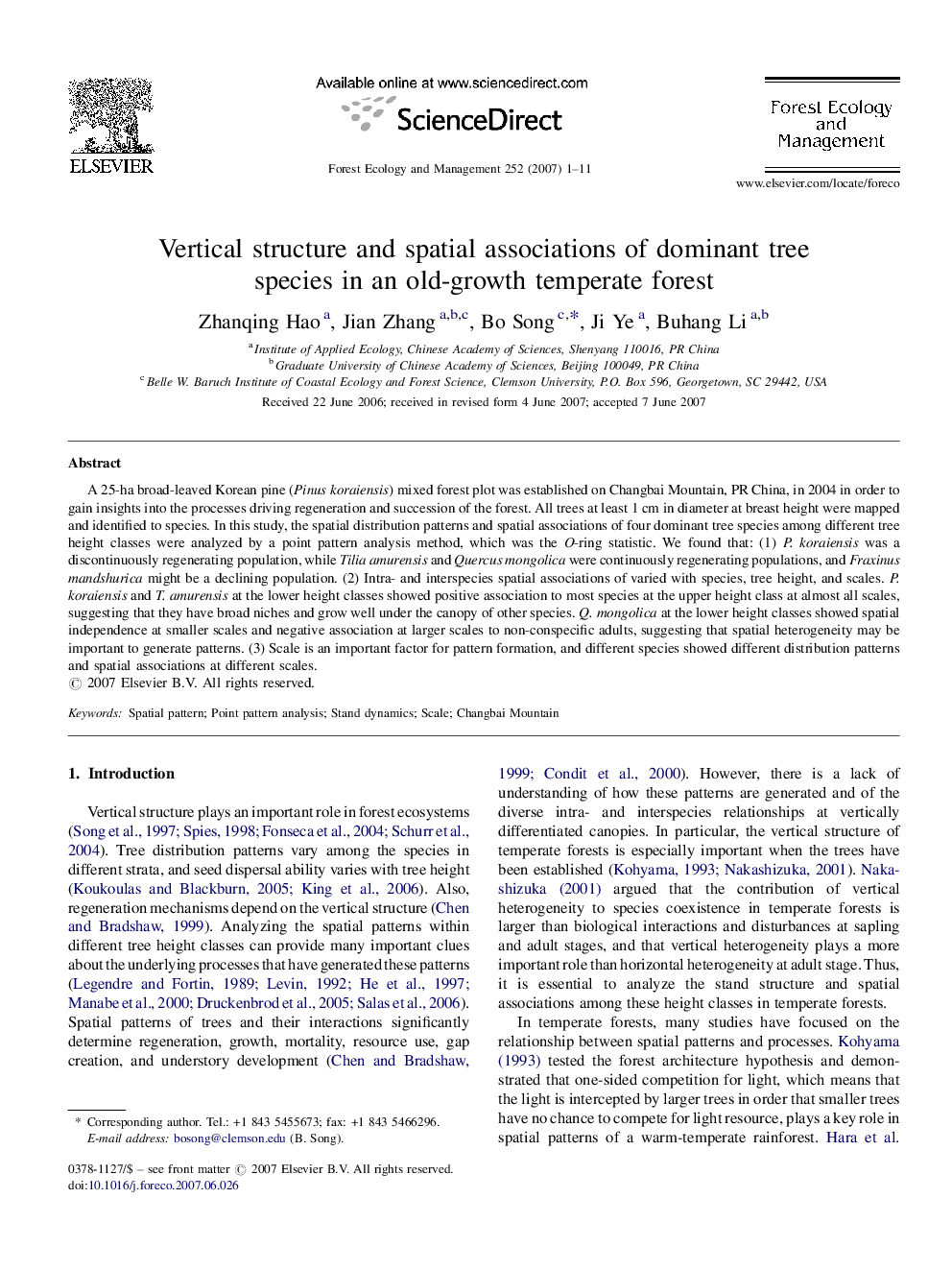| کد مقاله | کد نشریه | سال انتشار | مقاله انگلیسی | نسخه تمام متن |
|---|---|---|---|---|
| 90045 | 159364 | 2007 | 11 صفحه PDF | دانلود رایگان |

A 25-ha broad-leaved Korean pine (Pinus koraiensis) mixed forest plot was established on Changbai Mountain, PR China, in 2004 in order to gain insights into the processes driving regeneration and succession of the forest. All trees at least 1 cm in diameter at breast height were mapped and identified to species. In this study, the spatial distribution patterns and spatial associations of four dominant tree species among different tree height classes were analyzed by a point pattern analysis method, which was the O-ring statistic. We found that: (1) P. koraiensis was a discontinuously regenerating population, while Tilia amurensis and Quercus mongolica were continuously regenerating populations, and Fraxinus mandshurica might be a declining population. (2) Intra- and interspecies spatial associations of varied with species, tree height, and scales. P. koraiensis and T. amurensis at the lower height classes showed positive association to most species at the upper height class at almost all scales, suggesting that they have broad niches and grow well under the canopy of other species. Q. mongolica at the lower height classes showed spatial independence at smaller scales and negative association at larger scales to non-conspecific adults, suggesting that spatial heterogeneity may be important to generate patterns. (3) Scale is an important factor for pattern formation, and different species showed different distribution patterns and spatial associations at different scales.
Journal: Forest Ecology and Management - Volume 252, Issues 1–3, 30 November 2007, Pages 1–11